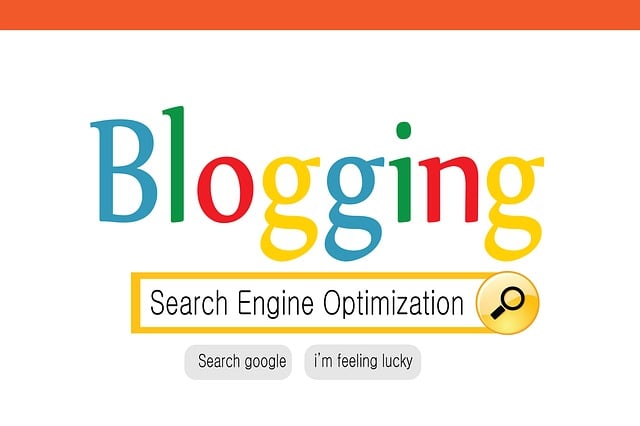In today’s digital age, blogging has become a powerful platform for sharing ideas, building a personal brand, and even earning a living. However, success in the blogging world requires more than just writing skills. It involves a strategic approach, consistent effort, and a deep understanding of your audience. Here are 10 steps to become a successful blogger.
Blogging is not a get-rich-quick scheme. Many people think that they will jump into it and become millionaires at night. This is a big misconception. Here, In this post, I will guide you on how to become a successful blogger in simple 10 steps.

1. Find Your Niche
The first step in becoming a successful blogger is to identify your niche. This involves choosing a specific topic or area that you are passionate about and that has an audience.
Your niche should reflect your interests, expertise, and the needs of your target audience. By focusing on a particular niche, you can establish yourself as an authority in that area and attract a dedicated readership.
2. Define Your Target Audience
Once you’ve chosen your niche, the next step is to define your target audience. Who are you writing for? What are their interests, needs, and challenges?
Gaining insight into your audience will enable you to provide material that appeals to them and encourages them to return for more. Conduct market research, create audience personas, and engage with your readers to gain insights into their preferences.
3. Create High-Quality Content
Content is king in the blogging world. To draw in and keep readers, you must continuously create valuable, high-quality material.
This means writing well-researched, informative, and engaging posts that address your audience’s pain points and interests. Use a mix of formats, such as how-to guides, listicles, opinion pieces, and case studies, to keep your content fresh and varied.
4. Develop a Content Strategy
A content strategy is essential for staying organized and consistent in your blogging efforts. Plan your content calendar in advance, outlining the topics you’ll cover, the formats you’ll use, and the publication schedule.
This will help you maintain a regular posting schedule, which is crucial for building a loyal readership. Additionally, a content strategy allows you to align your blog posts with your broader goals and objectives.

5. Optimize for SEO
Optimizing your blog for search engines is essential to raising its profile and drawing in natural traffic. Conduct keyword research to identify the terms and phrases your target audience is searching for, and incorporate these keywords naturally into your content.
Focus on on-page SEO elements, such as title tags, meta descriptions, headers, and internal linking. Additionally, ensure your blog is mobile-friendly and has fast loading times to improve user experience and search engine rankings.
6. Promote Your Blog
Creating great content is just the beginning; you also need to promote your blog to reach a wider audience. Utilize social media platforms to share your posts and engage with your followers.
Join online communities and forums related to your niche and contribute valuable insights. Collaborate with other bloggers and influencers to expand your reach.
Additionally, consider using email marketing to build a subscriber list and keep your audience informed about new posts and updates.
7. Engage with Your Audience
Building a successful blog requires fostering a strong relationship with your readers. Encourage comments and feedback on your posts, and take the time to respond to them.
Engaging with your audience not only builds trust and loyalty but also provides valuable insights into their preferences and interests.
Host Q&A sessions, run surveys, and create interactive content to encourage reader participation.

8. Monetize Your Blog
Once you’ve built a solid readership, you can explore various ways to monetize your blog.
Popular monetization methods include affiliate marketing, sponsored posts, display advertising, selling digital products or services, and offering premium content through membership programs.
Choose the methods that align with your blog’s niche and audience, and ensure that any promotional content is transparent and valuable to your readers.
9. Analyze and Improve
Regularly analyzing your blog’s performance is crucial for identifying areas of improvement and optimizing your strategy.
Use analytics tools, such as Google Analytics, to track metrics like traffic, bounce rate, average session duration, and conversion rates.
Analyze which types of content perform best and which channels drive the most traffic. Use this data to refine your content strategy, SEO efforts, and promotional activities.
10. Stay Consistent and Persistent
Success in blogging doesn’t happen overnight. It requires consistent effort, patience, and perseverance.
Stay committed to your content schedule, keep learning and adapting to new trends, and continuously seek ways to improve your blog.
Over time, your dedication will pay off as you build a loyal readership, establish your authority, and achieve your blogging goals.
Detailed Breakdown of the 10 Steps
1. Find Your Niche
Choosing the right niche is critical because it defines the focus of your blog. A well-defined niche helps you attract a specific audience and reduces competition.
To find your niche, consider what topics you are passionate about, have expertise in, and can consistently create content around.
Additionally, research market demand to ensure there is an audience interested in your chosen niche. Tools like Google Trends and keyword research tools can help you gauge interest and competition in different topics.
2. Define Your Target Audience
Knowing your target audience’s demographics, interests, problems, and habits is essential to understanding them. Creating detailed audience personas can help you visualize your ideal readers and tailor your content to their needs.
Engage with your audience through surveys, social media interactions, and comments to gather insights and feedback. This information will guide your content creation and help you build a loyal community.
3. Create High-Quality Content
High-quality content is the cornerstone of a successful blog. Focus on providing value by addressing your audience’s questions and challenges.
Ensure your content is well-researched, well-written, and free of errors. Use compelling headlines and visuals to enhance readability and engagement. Regularly update your content to keep it relevant and accurate.
4. Develop a Content Strategy
A content strategy helps you stay organized and ensures you cover a wide range of topics within your niche. Start by brainstorming content ideas and categorizing them into themes or pillars.
Create an editorial calendar to plan your posts ahead of time, including key dates and events relevant to your niche. Consistency is key, so aim to publish new content regularly, whether it’s weekly, bi-weekly, or monthly.
5. Optimize for SEO
SEO is crucial for driving organic traffic to your blog. Start with keyword research to identify relevant keywords for your content.
Use these keywords strategically in your titles, headers, meta descriptions, and throughout your posts. Optimize your images with alt text and ensure your website is mobile-friendly and loads quickly.
Build backlinks by guest posting on other blogs and collaborating with influencers in your niche.
6. Promote Your Blog
Effective promotion involves leveraging various channels to reach a broader audience. Social media is a powerful tool for promoting your blog. Share your posts on platforms like Facebook, Twitter, Instagram, and LinkedIn, and engage with your followers by responding to comments and messages.
Join niche-specific forums and online communities to share your expertise and drive traffic to your blog. Networking with other bloggers and influencers can also help you reach new audiences.
7. Engage with Your Audience
Engagement is key to building a loyal readership. Respond to comments on your blog and social media, and encourage discussions by asking questions and seeking feedback.
Host live Q&A sessions or webinars to interact with your audience in real-time. Create interactive content, such as polls, quizzes, and contests, to increase engagement and foster a sense of community.
8. Monetize Your Blog
Monetization strategies should align with your blog’s niche and audience. Affiliate marketing involves promoting products or services and earning a commission for each sale made through your referral links.
Sponsored posts allow you to collaborate with brands and get paid to write about their products or services. Display advertising involves placing ads on your blog and earning revenue based on clicks or impressions.
Selling digital products, such as e-books, courses, or printables, can also be a lucrative option. Membership programs offer premium content or exclusive access to your community for a fee.
9. Analyze and Improve
Analyzing your blog’s performance helps you understand what works and what doesn’t. Use analytics tools to track key metrics, such as page views, traffic sources, and user behavior. Identify your most popular content and replicate its success.
Monitor your SEO performance to see which keywords are driving traffic and optimize your content accordingly. Regularly review your promotional efforts to determine which channels are most effective.
10. Stay Consistent and Persistent
Consistency and persistence are essential for long-term success. Stick to your content schedule and continuously create high-quality content.
Stay informed about industry trends and best practices by following industry blogs, attending webinars, and participating in online communities. Be patient and stay motivated, as building a successful blog takes time and effort.
Celebrate your milestones and achievements, no matter how small, to stay inspired and focused on your goals.
Conclusion
Becoming a successful blogger is a journey that requires dedication, strategy, and continuous learning. By following these ten steps, you can build a strong foundation for your blog, attract a loyal readership, and achieve your blogging goals.
Remember to stay true to your passion, provide value to your audience, and remain consistent in your efforts. With time and perseverance, you can turn your blog into a thriving platform that resonates with readers and opens up new opportunities.


